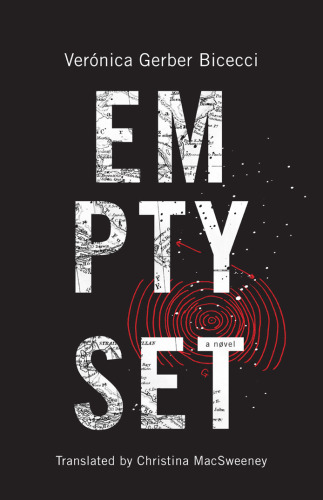
Empty Set
فرمت کتاب
ebook
تاریخ انتشار
2018
نویسنده
Verónica Gerber Bicecciناشر
Coffee House Pressشابک
9781566895002
- اطلاعات
- نقد و بررسی
- دیدگاه کاربران
نقد و بررسی

December 18, 2017
Bicecci’s experimental novel takes a unique approach to topics like debilitating loneliness, political repression, and epistemological crises. The narrator is Veronica, an aspiring visual artist, who lives with her brother in “the bunker,” a Mexico City apartment from which their mother, an exile who fled the Argentinian dictatorship, vanished when they were teenagers. Living in this “time capsule where everything is in a state of permanent neglect,” both siblings are “professional suspicionists” whose mother’s disappearance has affected the way they see the world: “Events always had a dark side, a shaded area we couldn’t make out, one that, despite being empty, always meant something more.” The novel whimsically chronicles Veronica’s various attempts to plumb these unknowable depths by studying tree rings, reading Stephen Hawking’s A Brief History of Time, and sifting through the papers of a deceased writer whose history mirrors her mother’s. In further efforts to decipher life’s mysteries, she also represents her familial and romantic relationships as Venn diagrams, which (among other illustrations) are reproduced in the text: “Visualized this way, ‘from above,’ the world reveals relationships and functions that are not completely obvious.” The graphics may strike readers as more gimmicky than revelatory, but nonetheless Bicecci has created a charming, elliptical novel.

December 1, 2017
Set in Mexico and Argentina, Bicecci's debut novel concerns itself with time, disappearance, Venn diagrams, and the circularity of the universe.Just before Veronica's 15th birthday, her mother disappears, leaving the girl and her brother with an "interminable absence" for which "there's no recognizable cause....Only a series of scattered, meaningless clues. A set emptying out little by little. Disordered fragments." Time in this novel, for both the narrator, Veronica, and the reader, moves disjointedly, in fits and starts. Characters and events are introduced out of order, and the text is broken by line drawings, diagrams, and blank spaces. Tenuously holding these fragments together are Veronica's romantic struggles and her ongoing search for understanding and connection. After a failed love affair, she returns to her mother's apartment ("the bunker"), where she attempts to fix a sagging wall with plywood, tracing the growth rings in paint and meditating on dendrochronology: "each wood shaving contains discontinuous moments from the life of the tree." Beyond the details of past and present human relationships, the political hangs like a shadow. Veronica takes a job organizing the effects of a deceased writer who, like her parents, fled Argentina for Mexico in the 1970s; the task makes her feel divided between parallel universes in which she coexists with the absence of her mother and the late author of Exile. For the writer, Veronica realizes, the places she "needs to return to no longer exist, and that is the root of her tragedy...the consequences of dictatorship are felt afterwards, long afterwards." In a documentary she watches with her brother, people in the Atacama Desert search for the remains of those "disappeared" by the government. Her mother's own disappearance remains mysterious. "Love confirms the circularity of the universe," the writer's lover claims in a telegram, and the ending plays with this idea.Within the deliberately fractured text, themes echo and time folds and unfolds. A spare, artfully constructed meditation on loss, both personal and national.
COPYRIGHT(2017) Kirkus Reviews, ALL RIGHTS RESERVED.




دیدگاه کاربران